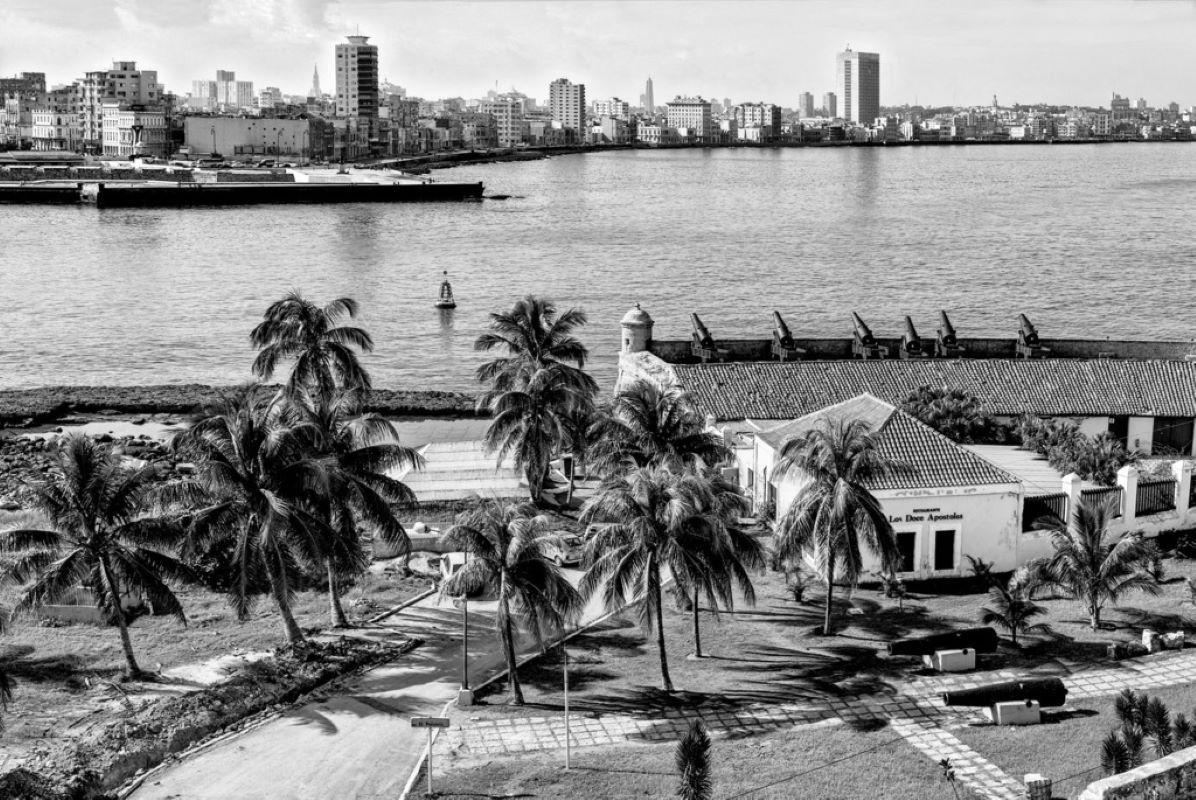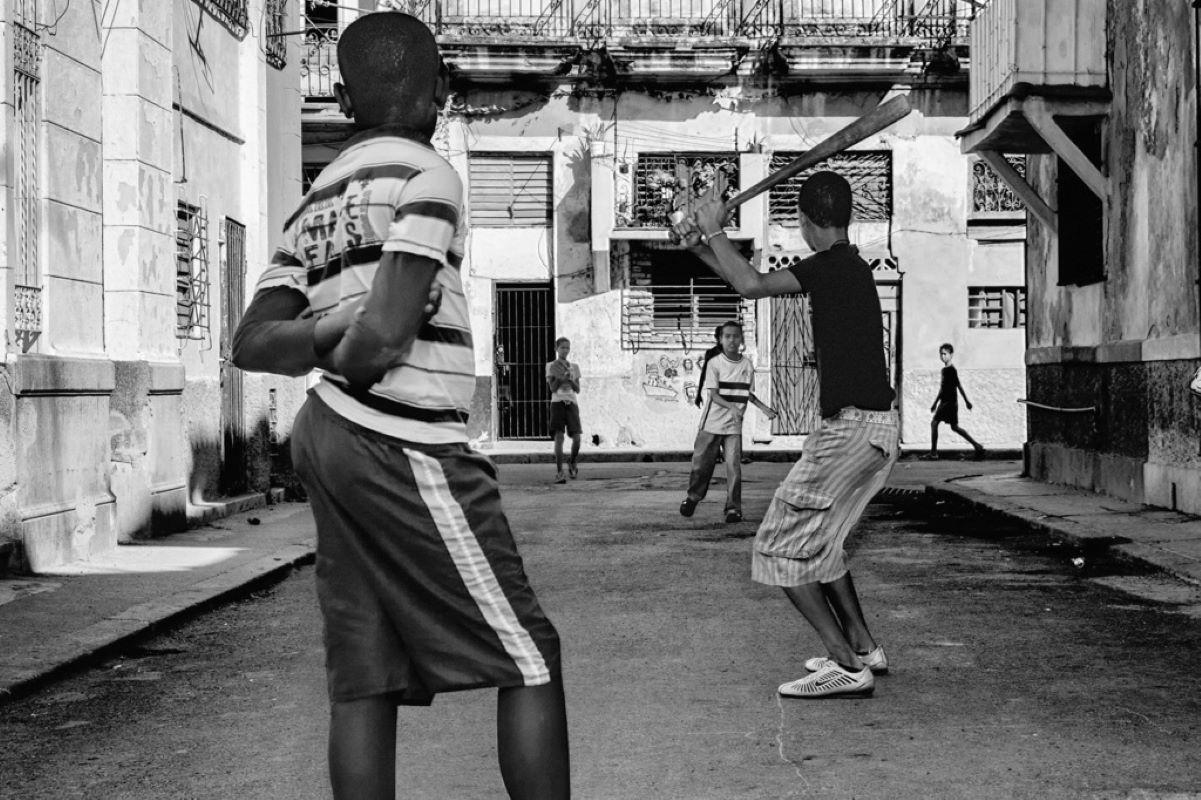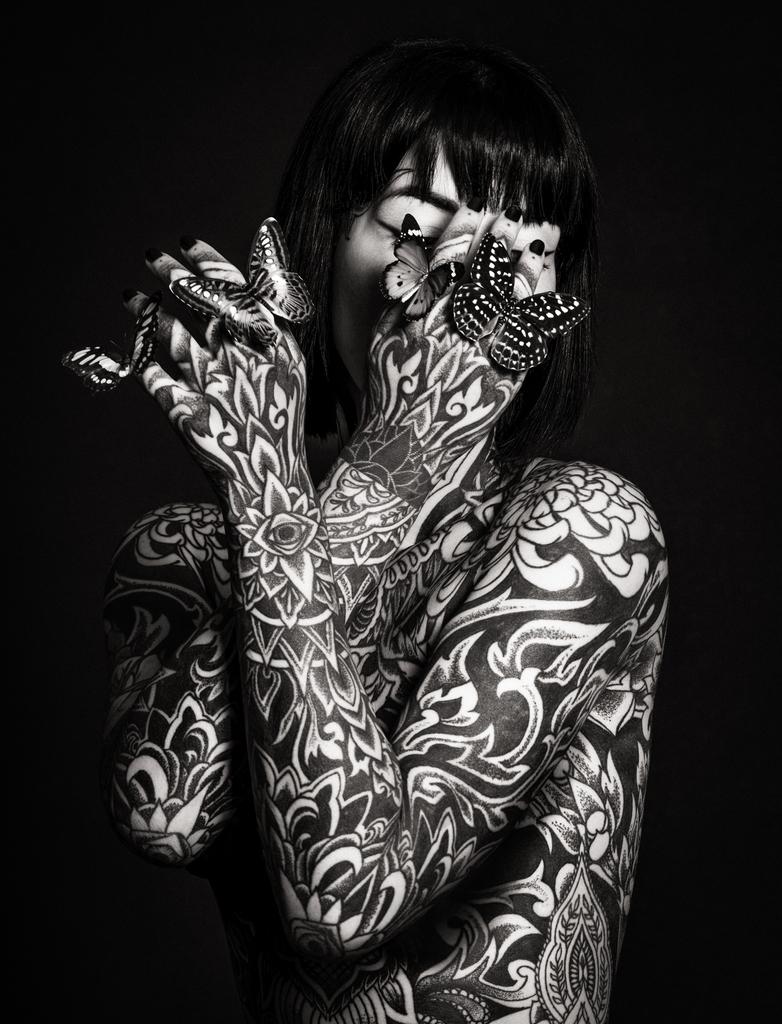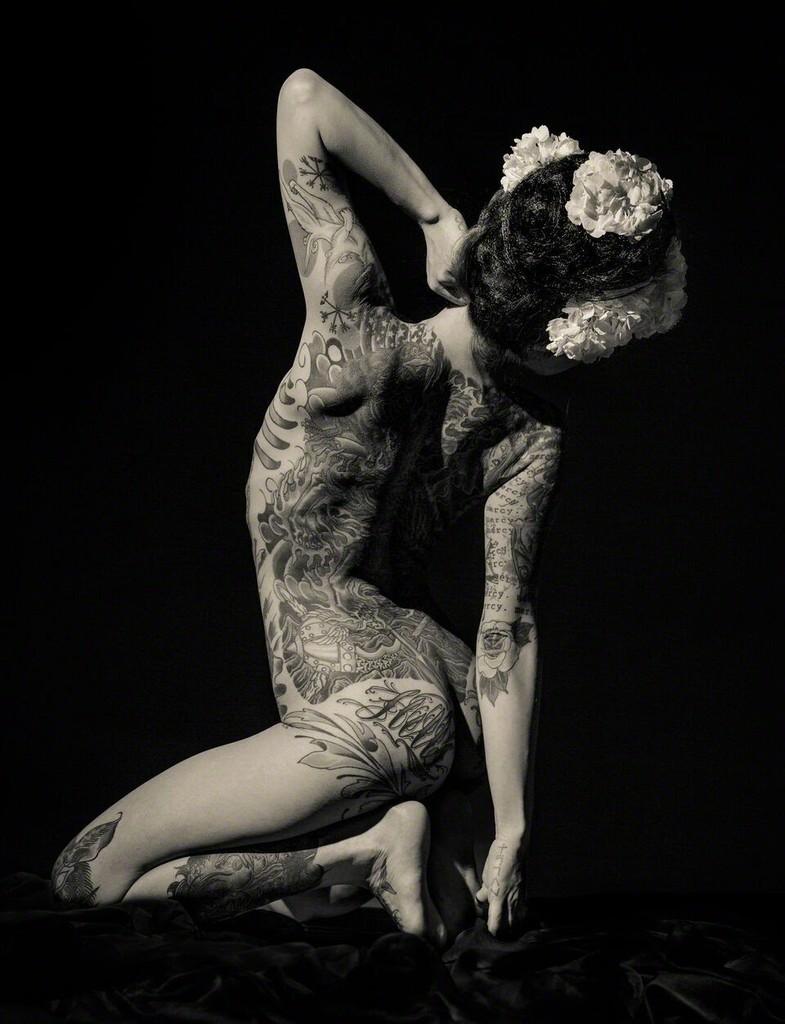Items Similar to La sorella maggiore, Thailand (1959) - Large size Black & White Fine Art Print
Want more images or videos?
Request additional images or videos from the seller
1 of 8
Fabrizio La Torre La sorella maggiore, Thailand (1959) - Large size Black & White Fine Art PrintPrinted Later
Printed Later
About the Item
Artwork # 1 on 5 sold in limited edition in perfect condition
« La sorella maggiore », In a Méo village, Thaïland
This photo was made in 1959, printed later, the negative was digitized during the artist's lifetime and the technical parameters (framing, contrast, light, etc.) was approved by him. This is a very high quality fine art prints on 310 gr/m² Fine Art paper with museum quality pigment inks.
Nothing prepared Fabrizio La Torre for a trip to the Far North of Thailand, to an area into which at the time foreigners were not really advised to venture, where tribal independence was considerable, no doubt justified by the relatively abundant cultivation of opium poppies. But one of his friends, a diplomat at the Italian embassy in Bangkok had talked him into doing him a big favour: the embassy driver had fallen ill and there was no-one to replace him on such a long trip over roads which were not always of the best quality, since only one third of the 700 kilometres to be covered was actually tarmacked. Nonetheless, Fabrizio had accepted enthusiastically, since his own escapades had been limited to Chiang Rai and Chiang Mai and no further. They had made the trip in two days, had stopped in a little village, at the agreed spot, to wait for the guide who was to take them to the village. Another foreigner joined them, a Spanish missionary who had lived for twenty years in China and spoke the dialect of theses tribes. Then, they had travelled a considerable distance before abandoning their car and completing the journey with a climb of several hours on tiny paths lost in the vegetation. Though the Hmong were nomadic, they were perfectly capable of building large, spacious huts of bamboo and thatch, which they easily dismantled when the time came to change camp. In order to welcome the foreign diplomate and his companion, the head of the village had consulted the shaman who had passed the question on to the spirits. The latter seemed perfectly happy. The atmosphere was joyful, festive and friendly which encouraged Fabrizio to bring out his camera and start taking a few photos. And whilst the diplomat and the missionary were talking to the chief, the photographer was able to mingle with the daily life of the tribe, weaving, cooking, caring for the animals and he was much taken with the beauty of the traditional costumes and the silver jewellery with which even the children were covered.
Fabrizio La Torre came and went freely in the village, and, as was his wont, exchanged smiles and signs of friendship with everyone. The group of strangers had been invited to share a meal and delicious smells were already in evidence. However, Fabrizio could not help overhearing that the conversation between the head of the village and the diplomat seemed to be taking an unexpected turn, and becoming distinctly unfriendly shouting. He approached the group,
saw that the head of the village had placed two large brown blocks like large bars of chocolate in front of him, doubtless opium paste, and he seemed to be very angry with the diplomat. The missionary interpreter was doing his best, but tempers continued to rise. At a given moment, the diplomat signalled to the photographer to follow him and they left the village to what sounded suspiciously like a volley of insults in the Hmong dialect. It was only at the bottom of the hill,
breathless because of the speed of the descent, that the diplomat explained: the head of the village had agreed to the meeting, had prepared a feast only because he thought that the Italian was like one of his colleagues from a friendly embassy, who had been there some weeks previously to exchange opium blocks for wads of dollars… Understandably disappointed that there was no deal to be transacted, and unreceptive to the fact that the Italian Republic sent him an emissary who was admittedly friendly but not a dope fiend, the chief promptly dismissed the interlopers. The missionary, a friend of the tribe and speaking their dialect, was the only one to be invited to the feast. And Fabrizio had the time to take some exceptional photos. He had no regrets about this long-ago escapade and he called it to mind still laughing at the misunderstanding.
Fabrizio La Torre (b. Rome 1921 d. Brussels 2014) was an Italian neo-realist photographer working during the period 1950-1960 who left behind a body of work focussing on three specific geographical areas: Italy, North America, which he spent several months visiting in 1955 and Asia where he lived for five years (1956-61).
Fascinated by the task of capturing moments of truth and intimacy which characterise the human condition all over the world, he gives us moments of insight into life which reach out to us bridging time and distance. He holds up to us an affectionate and benign mirror, always knowing, sometimes amused but never mocking.
In 1965, success came knocking at his door: he was offered the possibility of exhibitions and publication but he turned it down for reasons he never fully explained.
The most we can do is note that this was also the time when the immense talent and historical importance of the photographic works, produced a century earlier by his grandfather Enrico Valenziani, were discovered. This may have made him feel he could not compete, particularly as he came from a family which was possessed of multiple artistic talents but in which no-one claimed to be an artist. Perhaps he saw himself as “a photographer” who was just the grandson of one of the founding fathers of Italian photography. Who knows?
In 1970 he closed his archives and gave away his cameras. He ceased to see his photography as an act of creation but merely as a kind of notebook of his many travels for his job.
In 2009 he agreed to re-open his archives and to have his photos restored and digitised. He also permitted the first printed edition of his art photos.
Far from rejecting the switch to digital photography, he welcomed the freedom to render the shades, the tones, the “sfumature” which photo labs in the 1960s saw as “imperfections”, at a time when hyper contrast was the big thing, deep blacks and anaemic whites were all the rage. Fabrizio La Torre’s vision of the world was full of different shades.
The last few years of his life were spent hard at work. He may have been a little unsteady on his legs but there was nothing wrong with his head - memory intact, imparting clear instructions and sharing many reminiscences. With Jean-Pierre De Neef and his technical team he fine-tuned every single print, perfectly willing to start all over again if necessary to achieve what he had intended 50 years earlier when the photo was taken - the desired composition, lighting and contrast.
The exhibitions, the publications, the encounters with his audience came thick and fast: in Paris at the Italian Institute of Culture in 2010, in Brussels at the Ixelles Museum in 2011, followed by the magnificent Retrospective organised in 2014 in the Principality of Monaco. For a year he worked on a daily basis, taking advantage of this major event to give his final instructions. Fate can be cruel: his heart finally gives out just two weeks before the opening of the exhibition which covers 800 square metres. However, he knows he has done what was necessary, he has passed on his instructions which embody his desire to bring to life his photographic achievements which are centred entirely on the human dimension, man’s adventures, his dreams, his fight for a better life.
Beginning in 2017, his curator, François Bayle, assisted by the team at Brussels Art Edition started work on the photos taken by Fabrizio La Torre in Asia during his five year stay in Thailand (1956-61). In November 2018, in Bangkok, a book entitled “Bangkok That Was” was published in English, which brings together these photos and, using the original notes left by the artist, tells the story of his life in Asia and expresses his affection for its people.
An exhibition with the same title took place for two months at the Serindia Gallery. Afterwards Fabrizio’s photos were taken to their permanent home in Bangkok, the cultural venue of the Central Embassy Mall where they are displayed and on sale all year round.
Meanwhile a new exhibition is planned in Bangkok and a new book published based on the pioneering efforts of Fabrizio La Torre in photographing in 1958 in the storerooms of the National Museum in Bangkok the painstaking lacquerwork representations of daily life of the Siamese people two centuries earlier.
At the very beginning of 2020 Jean-Pierre De Neef, François Bayle and their teams were working enthusiastically on two specific projects: the exhibition and the book on the lacquerwork mentioned above and a very fine exhibition planned for 2021 in New York.
Then along came the virus and upset the best-laid plans. The projects have been postponed, in all probability for a year.
In order to continue funding preparations for these two major projects, the high quality art photos, validated by the artist himself before his death, are now on sale.
This is an opportunity for collectors and enthusiasts to acquire the works of an Italian artist of recognised talent whose works are attractively priced before the exhibition in the USA, thus offering the advantage of a very strong potential for growth.
- Creator:Fabrizio La Torre (1921 - 2014, Italian)
- Creation Year:Printed Later
- Dimensions:Height: 41.34 in (105 cm)Width: 27.56 in (70 cm)Depth: 0.12 in (3 mm)
- Medium:
- Movement & Style:
- Period:
- Framing:Framing Options Available
- Condition:
- Gallery Location:Brussels, BE
- Reference Number:1stDibs: LU157029591612
About the Seller
5.0
Gold Seller
These expertly vetted sellers are highly rated and consistently exceed customer expectations.
Established in 2010
1stDibs seller since 2021
23 sales on 1stDibs
Typical response time: <1 hour
- ShippingRetrieving quote...Ships From: Brussels, Belgium
- Return PolicyA return for this item may be initiated within 14 days of delivery.
More From This SellerView All
- Parcheggio condiviso, New York (1955) - Large size Black & White Fine Art PrintLocated in Brussels, BEArtwork # 1 on 5 sold in limited edition in perfect condition This photo was made in 1955, the negative was digitized during the artist's lifetime and the technical parameters (fram...Category
1950s Photorealist Black and White Photography
MaterialsArchival Pigment
- Paeseggio Urbano, New York City (1955) - Large size Black & White Fine Art PrintLocated in Brussels, BEArtwork # 1 on 5 sold in limited edition in perfect condition This photo was made in 1956, the negative was digitized during the artist's lifetime and the technical parameters (fram...Category
1950s Photorealist Black and White Photography
MaterialsArchival Pigment
- Eiffel Tower, Tokyo ( 1957 ) - Japan - Large size Black & White Fine Art PrintLocated in Brussels, BEArtwork # 1 on 5 sold in limited edition in perfect condition Eiffel Tower, Tokyo - Japan This photo was made in 1957, the negative was digitized during the artist's lifetime and th...Category
1950s Photorealist Black and White Photography
MaterialsArchival Pigment
- 100th Anniversary Celebration Coffret # 7 - Vaticano - Vintage PhotographyLocated in Brussels, BEArtwork sold in perfect condition Fabrizio La Torre’s 100th Anniversary Celebration (1921-2021) Set # 7 - Vaticano Limited edition of 100 Coffrets for each themes, all artworks print...Category
1950s Photorealist Black and White Photography
MaterialsArchival Pigment
- A l'ombra del gigante - New York, 1956 - Contemporary Black & White PhotographyLocated in Brussels, BEArtwork sold in perfect condition, print on baryta paper 310 grs pigment inks of museum quality, limited edition of 5 copies New York, January 1956. All’ombra del gigante, in the shadow of the giant, the Empire State Building seems to watch over the liners that connect the city to all the ports of the globe. Back to Genoa, Fabrizio La Torre...Category
1950s Photorealist Black and White Photography
MaterialsArchival Pigment
- L’Addio, New York, December 1955 - Contemporary Black & White PhotographyLocated in Brussels, BEArtwork #1 / 5 sold in perfect condition printed on baryta heavyweight paper & framed (black metal border) From the collection called "Art 2014", format 30x42 cm. SERIES OF 5 PRINTS + 2 AP Artwork printed later on fine art papers later (2014) from black & white negatives processed in 1962 “L’Addio”, the farewell, New York, December 1955. At the stern of an Italian liner carrying him back to Genoa the photographer could not pass up the opportunity to capture this sweetly simple moment where an Italian couple say goodbye to the American metropolis by waving a white handkerchief...Category
1950s Photorealist Black and White Photography
MaterialsArchival Pigment
You May Also Like
- Ninos de la Calle 4By Steve SchlackmanLocated in New York, NYSteve Schlackman is a lawyer by profession and a photographer by choice. Fascinated by the magical world of photography since his youth, he honed this skill over time, meticulously p...Category
2010s Photorealist Black and White Photography
MaterialsArchival Paper, Photographic Paper, Digital, Photogram, Archival Pigment...
- El PuertoBy Steve SchlackmanLocated in New York, NYSteve Schlackman is a lawyer by profession and a photographer by choice. Fascinated by the magical world of photography since his youth, he honed this...Category
2010s Photorealist Black and White Photography
MaterialsPhotographic Paper, Digital, Photogram, Archival Pigment, Digital Pigment
- Blue SmokeLocated in New York, NY“Ink Stories”, which was introduced at Nyari’s very first solo gallery exhibit, consists of large-scale nude photographs that explore the concept of self-identity and female empowerm...Category
2010s Photorealist Nude Photography
MaterialsPhotographic Film, Archival Ink, Archival Paper, Photographic Paper, Pho...
- Fans of Gion KobuLocated in New York, NY“Ink Stories”, which was introduced at Nyari’s very first solo gallery exhibit, consists of large-scale nude photographs that explore the concept of self-identity and female empowerm...Category
2010s Photorealist Black and White Photography
MaterialsPhotographic Film, Archival Ink, Acrylic, Archival Paper, Photographic P...
- LevitateBy Reka NyariLocated in New York, NY“Ink Stories”, which was introduced at Nyari’s very first solo gallery exhibit, consists of large-scale nude photographs that explore the concept of self-identity and female empowerm...Category
2010s Photorealist Black and White Photography
MaterialsArchival Ink, Archival Paper, Photographic Paper, Photogram, Archival Pi...
- Hangyaku NoLocated in New York, NY“Ink Stories”, which was introduced at Nyari’s very first solo gallery exhibit, consists of large-scale nude photographs that explore the concept of self-identity and female empowerm...Category
2010s Photorealist Black and White Photography
MaterialsPhotographic Film, Archival Ink, Archival Paper, Photographic Paper, Pho...
Recently Viewed
View AllMore Ways To Browse
Vintage Black Jewelry
Black Vintage Jewellery
Bamboo Black
La Period
Vintage White China
Black Front Door
Black Owned Vintage Jewelry
Brown And White China
Vintage La Book
White Front Door
Light Switch Art
Black Long Mirror
White Paste
Vintage Camping Art
La Conversation
Large Black Vintage Mirror
Large Vintage Black Mirror
Vintage Childrens Book Art





